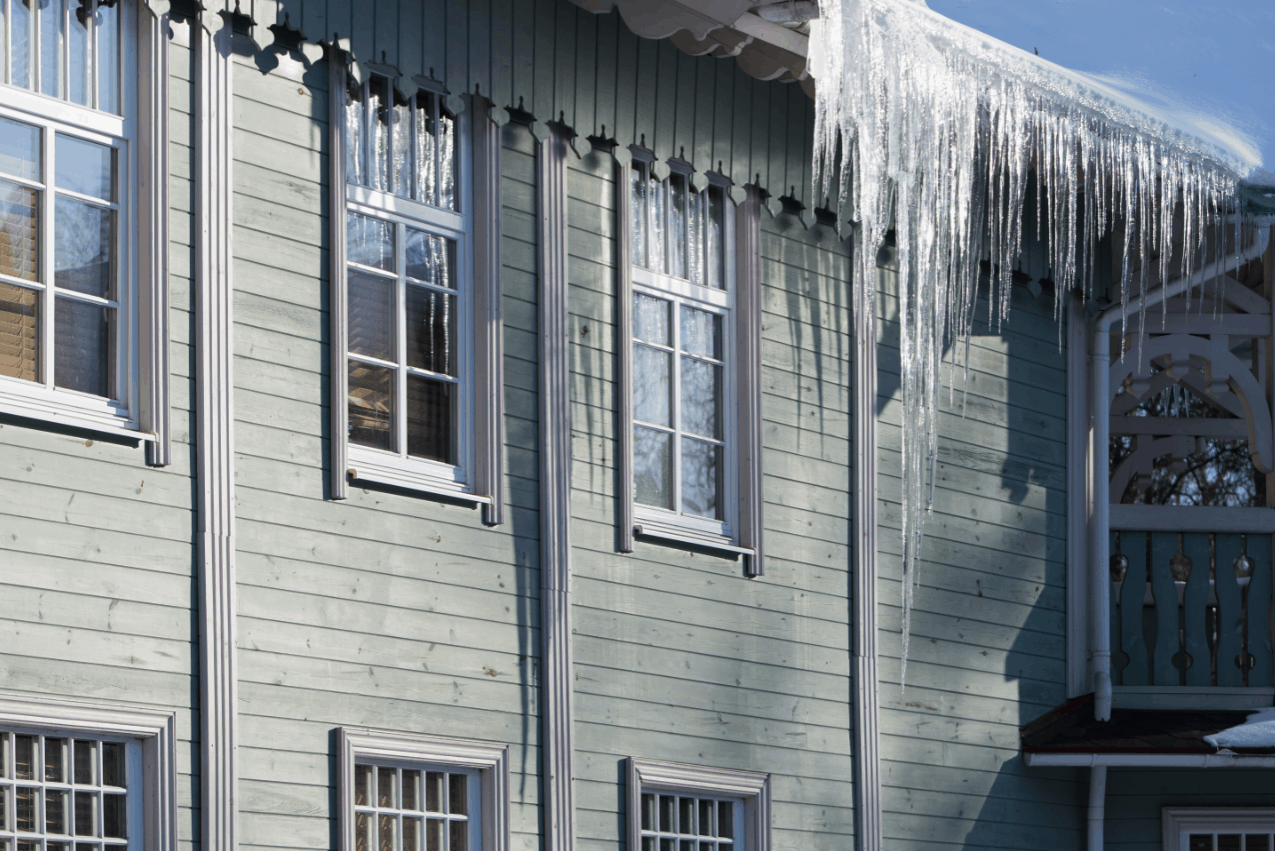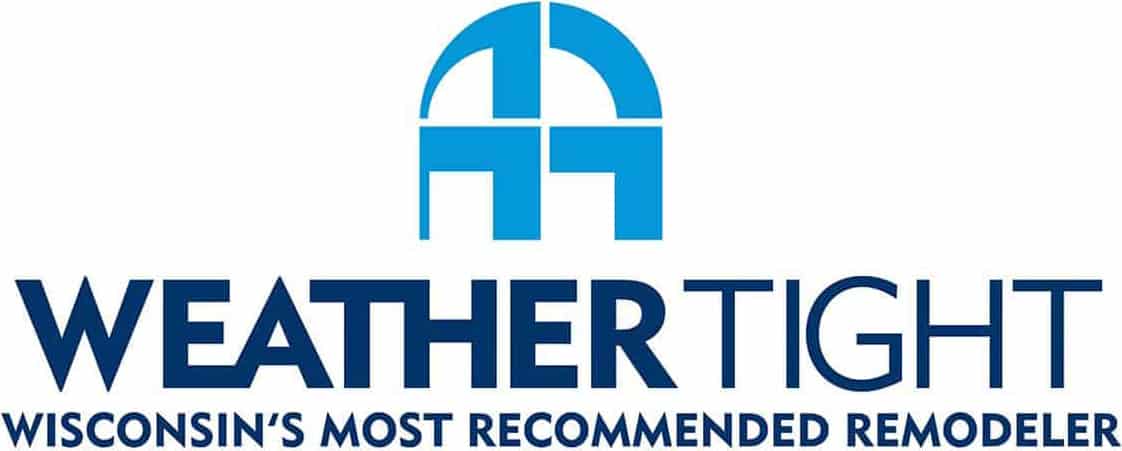Ice Dam Prevention: The Importance of Ventilation
Icicles may be pretty, but when they’re hanging off your roof, it may be a sign that you have a ventilation issue. Now, a few small icicles probably don’t present a problem, but if the corners of your home have giant icicles or big chunks of frozen water, you may have ice damming on your roof.
Ice dam prevention is essential because when those giant stalactite-like icicles hang from your roof, they cause significant damage. Ice dams back up your gutters and cause melting snow to spill over the edges of your roof and leak water into your foundation. Not only that, but big ice spikes present a hazard to children, pets, and even well-meaning adults who can be injured by falling chunks of ice.
So, what do you need to know about ice dam prevention? What do those icicles mean for your roof?

Why Ice Dams Happen on Your Roof
Here in the Midwest, ice and snow are part of normal winter life. Most of us expect to have at least some ice and snow buildup on our roofs and in our gutters, but a properly vented roof should prevent ice dams and keep the icicles from becoming a hazard.
What kind of hazards do ice dams present? Well, for starters, many homeowners don’t know how to remove ice dams. Knocking them down with a shovel or chiseling them off your roof while perched on an icy ladder is dangerous. You could damage your home’s soffit, fascia, and gutters, and even worse—you could injure yourself!
In the case of ice dams on your roof, prevention is critical. Ice comes from water, and we all know water and moisture can be hazardous to your home. Frozen water expands 9-10%, which can damage the trim on your home. As the ice melts, it can seep into the trim and cause moisture problems, including damage to your roof, soffit, fascia, deck, and even your foundation.
So why do ice dams happen? Big icy areas are an indication that something’s not correctly ventilated in your home. A roof that doesn’t “breathe” properly causes water (in the form of snow or ice) to melt unevenly. Without ventilation, the natural heat that comes off your home, snow, and cold temperatures create the perfect ice dam situation. As the snow melts, water streams down your roof. When the water hits the gutter (which is slightly away from your home and, thus, colder), it freezes, causing an overflow and resulting in an ice dam.
If ice dams are a problem for your home, it’s time to address the root cause—your roof’s ventilation.
How to Tell if Ventilation is a Problem
How do you know if ventilation is a problem for your home? Well, ice dams are a strong sign that something is amiss. Other signs of roof ventilation issues are:
- Mildew, discoloration, or black marks on your soffit, fascia, or trim.
- Paint bubbling or peeling on the soffit, fascia, or trim.
- Rotting wood or areas that feel “spongy” and soft.
- The appearance of pests in your home.
- An abundance of condensation in your home (note: some condensation is a normal occurrence).
- Curling or peeling shingles.
All of these items can indicate concerns with your roof’s ventilation. Mildew and discoloration are often one of the earliest clues that there’s a ventilation problem. Paint that chips, bubbles or cracks, is another strong marker. Usually, by the time wood has been harmed or you notice leaks, the damage is already quite significant.
Pay attention to changes in your home’s exterior or interior. Often ventilation issues slowly erode your house’s appearance, so they might not be noticeable at first. Ice damming is a strong indicator that something is wrong, and it’s time to have your house examined by a professional.
Here’s a Home Improvement Tips video from Tod & Todd showing what improper ventilation can look like:
The Damage Caused by Poor Soffit and Roof Ventilation
What if you choose to ignore ice dams and other signs of improper roof ventilation? Are some extra icicles really that big of a deal?
Your home “breathes.” Because there are living, breathing people inside (along with a furnace, water, and electronics), your home gives off hot air. Much of that heat ventilates through the roof. Your soffit is the area between the roof and the sides of your home. If the soffit isn’t ventilated properly, cool air can’t flow into the attic correctly. There’s a special scientific calculation that’s used to pinpoint the exact ventilation needs of your home.
Even if you have a new roof installed with the proper, calculated ventilation, you may still run into issues with your home. New roofing with old soffit can be a huge concern. In fact, in many cases, improper soffit ventilation can lead to a voided warranty—even on a brand-new roof! So it’s crucial that when a representative determines your home’s needs, whether it’s a new roof or a new continuously ventilated soffit, they do a thorough examination.
Ventilation problems can also damage your home’s insulation. The warm moist air that builds up in your attic can cause the degradation of your insulation. You may notice that the insulation is less effective, and you could even find mold, mildew, and pests making their home in your attic.
Improper ventilation can also lead to moisture buildup inside your home. If you notice a lot of condensation on your windows, it can indicate ventilation concerns. Homeowners often mistakenly think that condensation on the window’s surface means a problem with the window itself, but that is often not the case. Fogginess or water between panes of glass is a sign of seal failure, but a window that’s wet on the surface can be a sign of a ventilation issue. It’s important to note that all homes have some natural condensation because of activities (showering, cooking, breathing) inside the house. Still, an abundance of condensation could be indicative of more significant concern.
A properly ventilated roof and soffit ensure that your home is kept comfortable with a consistent temperature. It will help your home “breathe” properly and prevent significant headaches down the road.
So, if you’re noticing ice dams on your roof, don’t ignore the problem. It’s time to get your roof and soffit examined by a professional. Our Weather Tight representatives are standing by, ready to help you address any concerns about your home’s ventilation. Call us today, and we can help you explore your options for soffit or roof replacement.

 414-459-3874
414-459-3874
 Text Us!
Text Us!